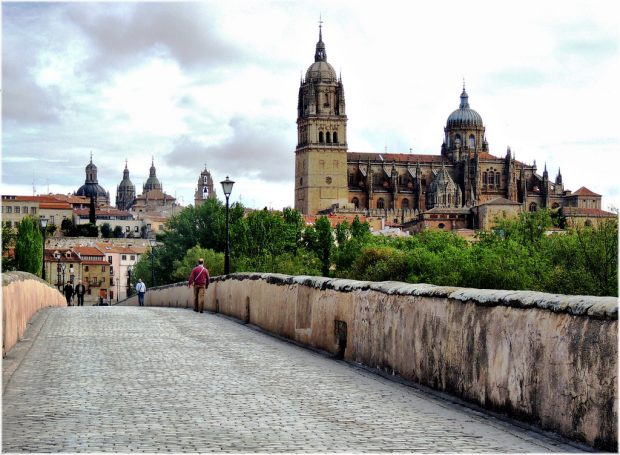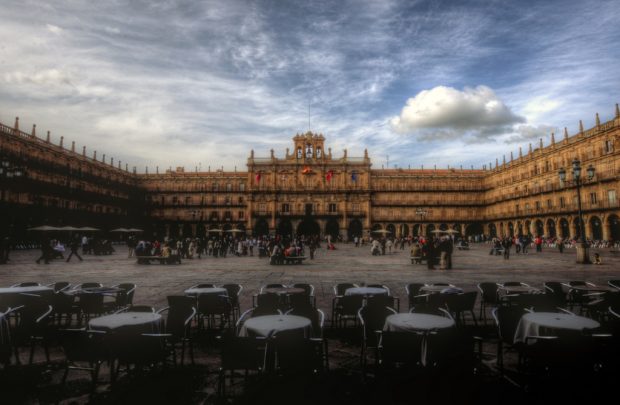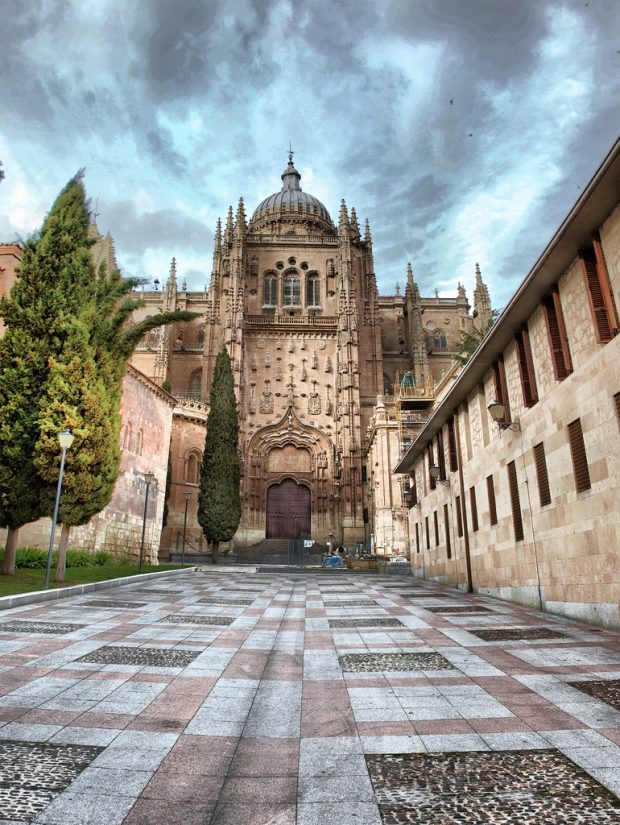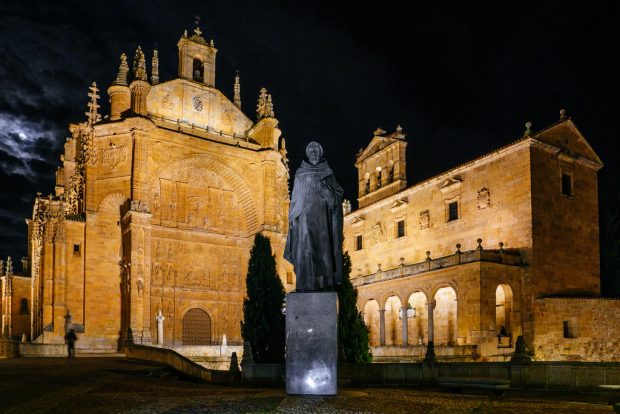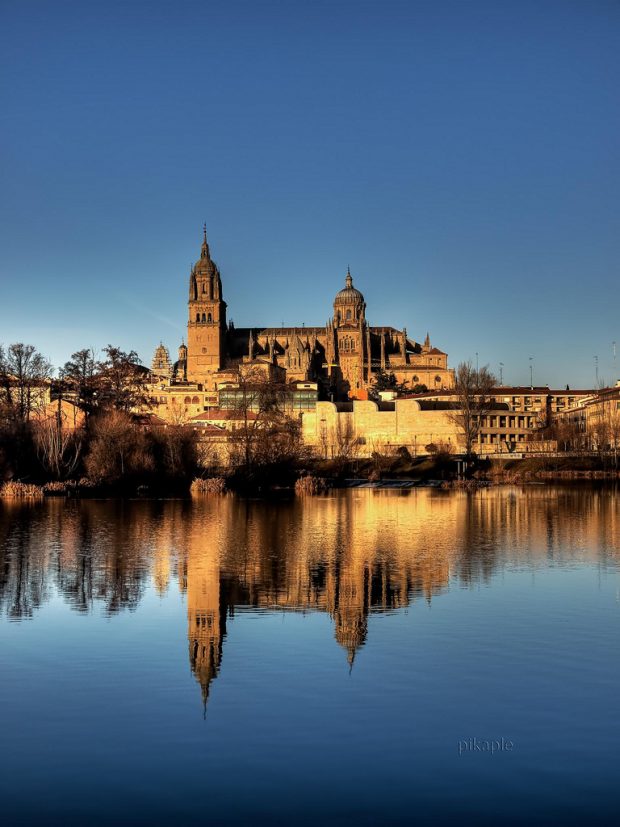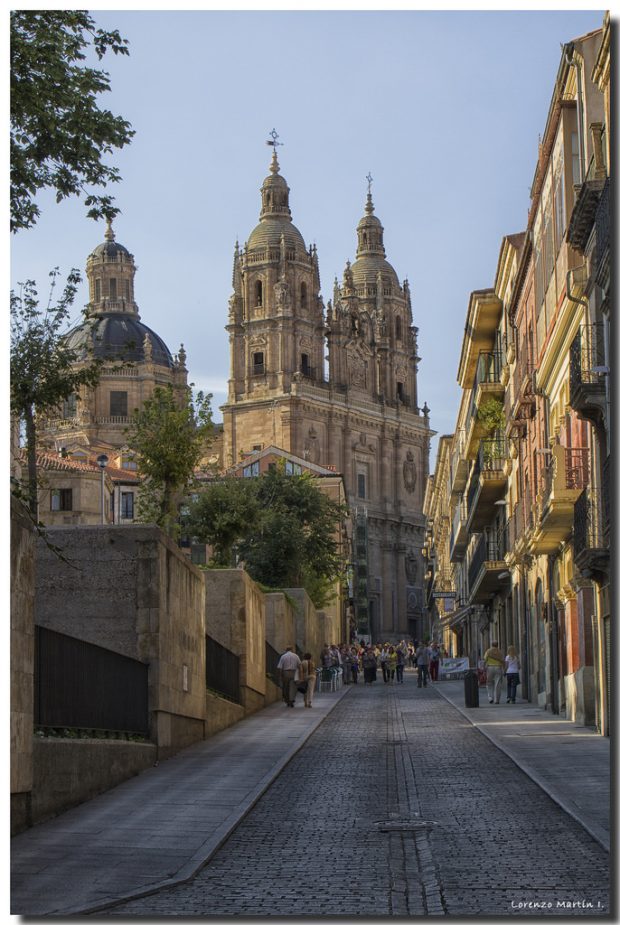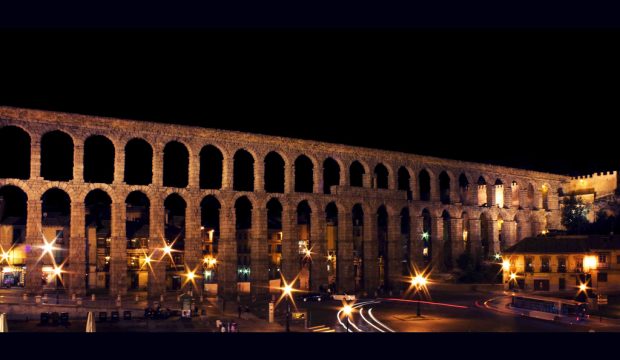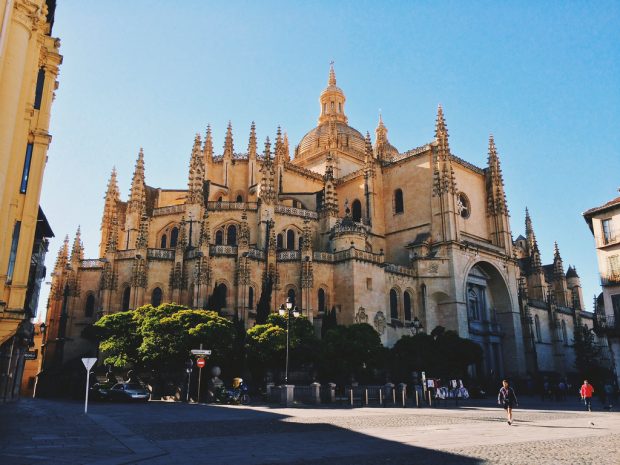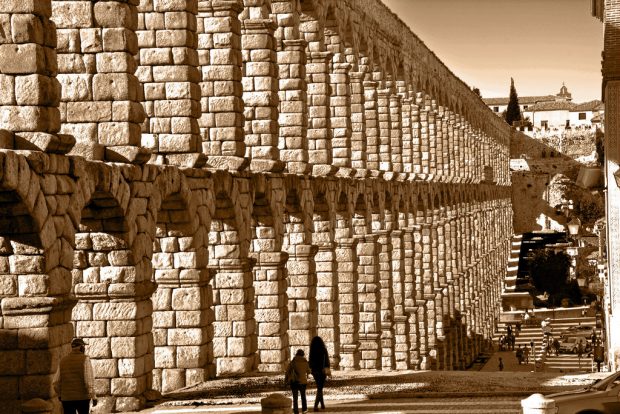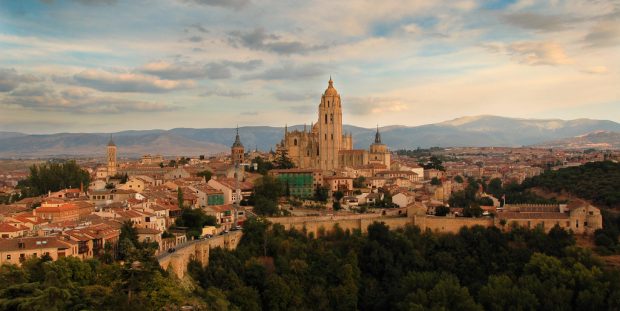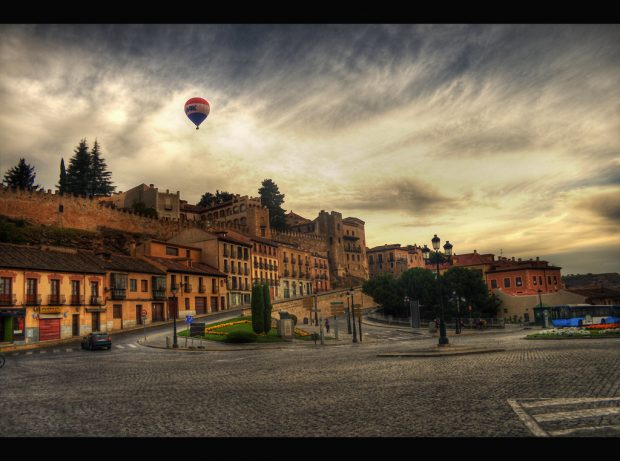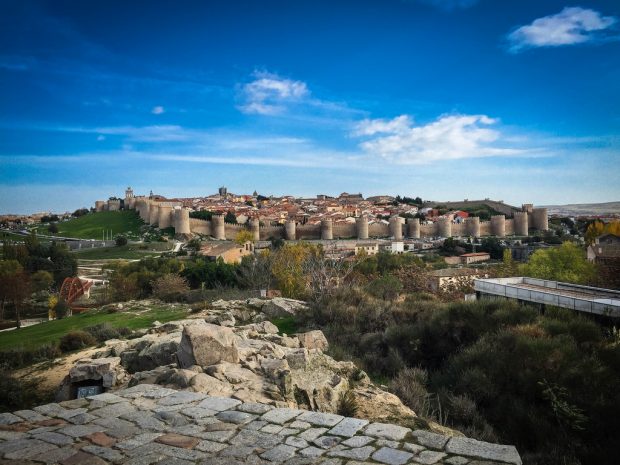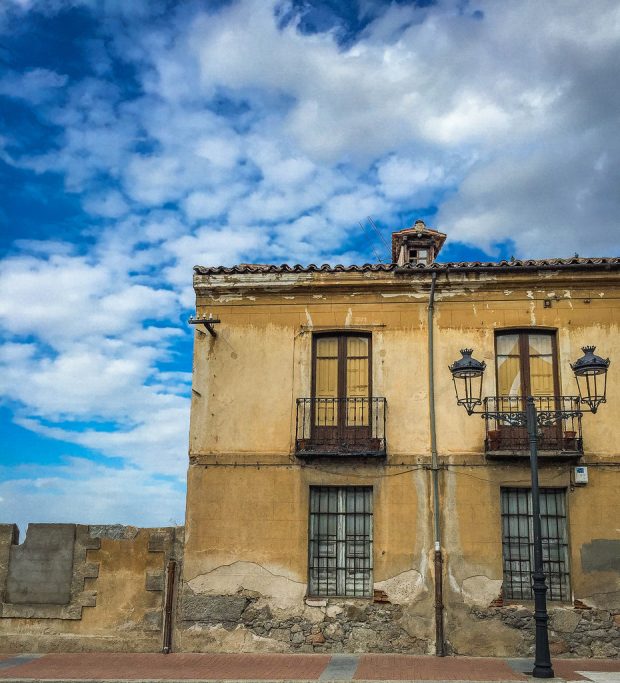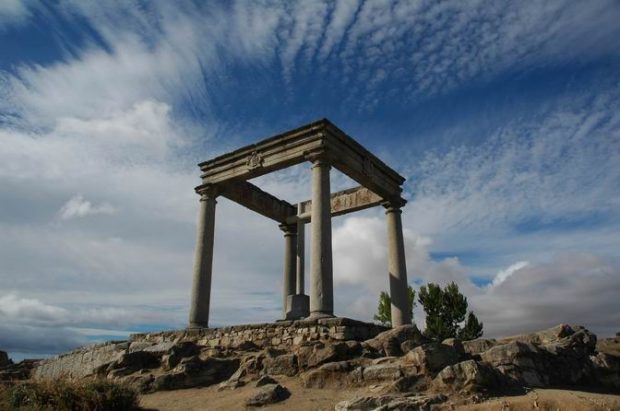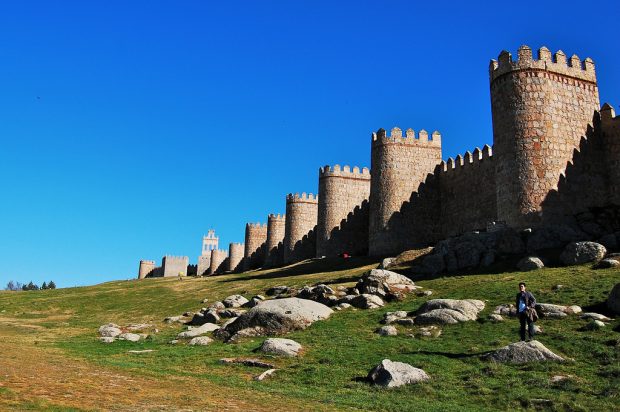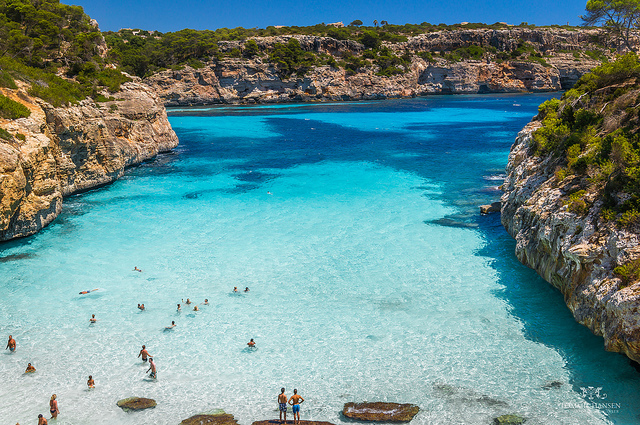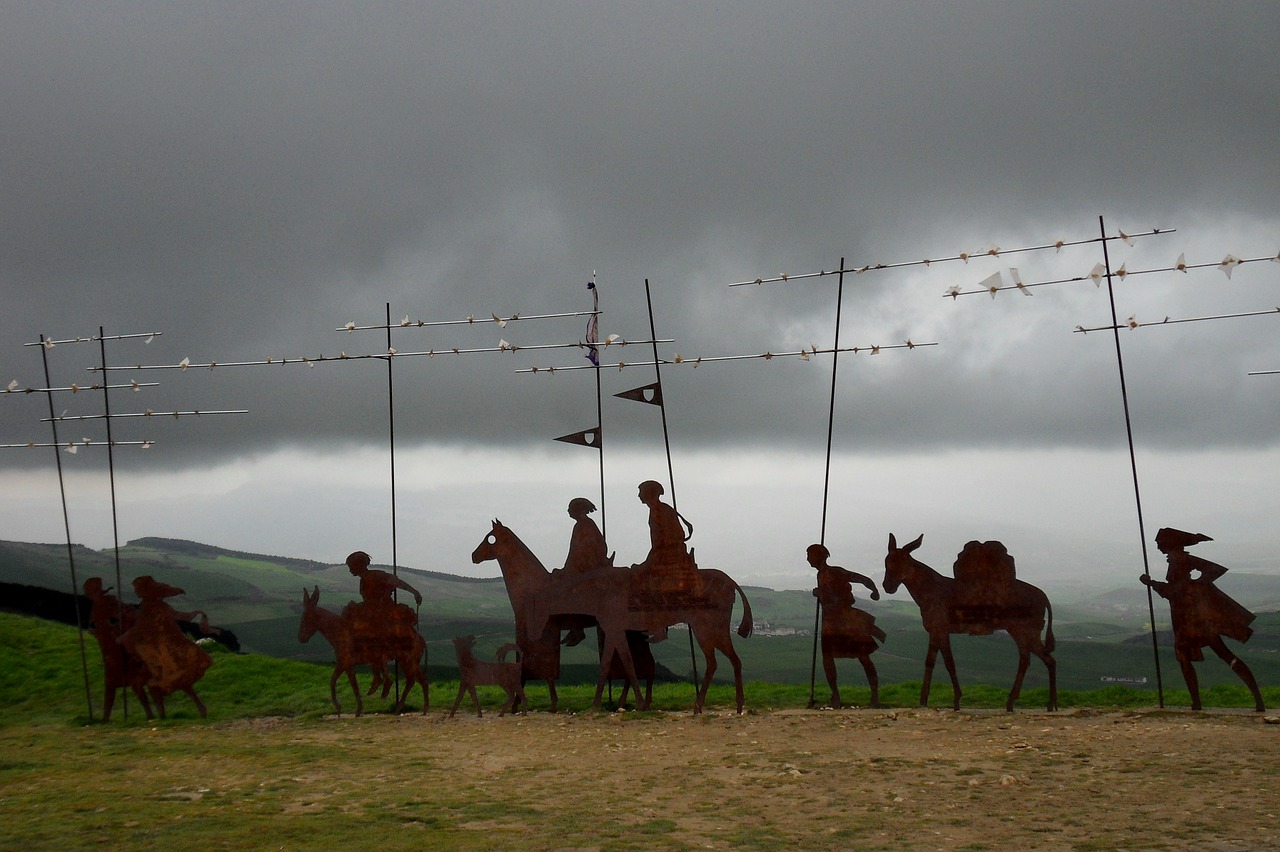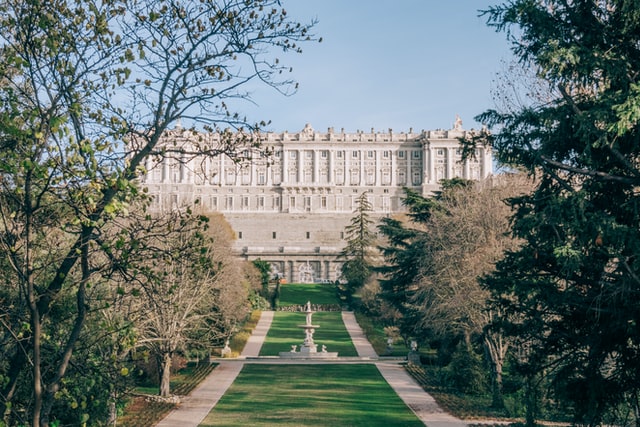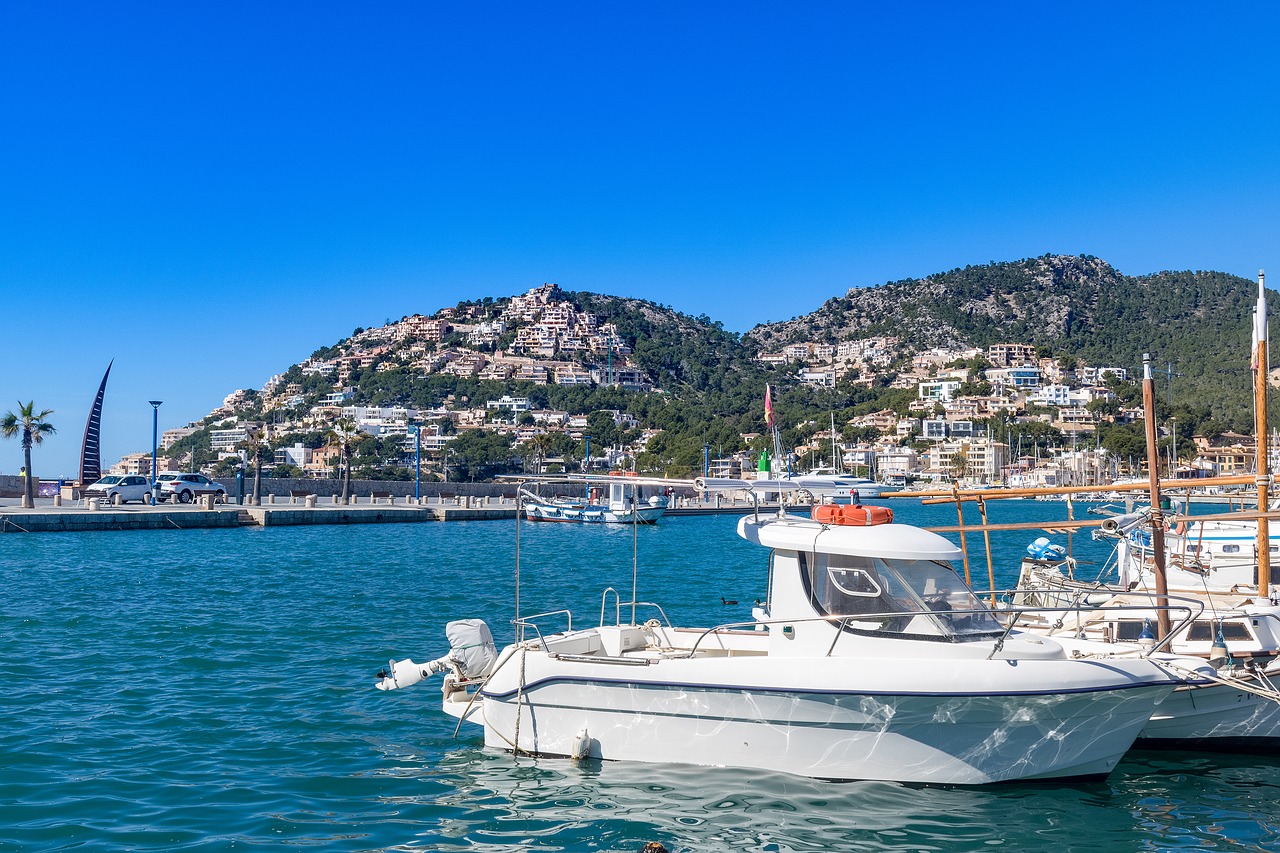The roots of any culture in the world are actually hidden in the small towns and villages, somewhere away from the modern skyscrapers, rush hour and busy lifestyle. One can learn more about the history of one place on its streets, bars, having a little conversation with the local people, accompanied with a typical local drink and a plate or two of their kitchen. This is how one grows, this is how one chooses, how one makes decisions. We want you to take a look at these three Spanish cities which are not among the biggest ones, but between the most important ones for the Spanish history and tradition. They are a real prove that you don´t have to be big in order to be beautiful and important.
Salamanca
Salamanca is the capital city of the province of Salamanca in the region of Castile and Leon. We won´t be wrong if we say that exactly Salamanca plays a big, if not the main role when the education in Spain is in question. With a population of approximately 229.000 people, Salamanca is the second most populated city in Castile and Leon. The University of Salamanca is the oldest one in Spain and it was founded in 1218 which makes it the fourth oldest western university at the same time. Plaza Mayor, Campo de San Francisco, Huerto de Calisto y Melibea and Plaza del Corrillo are one of the places you would love if you visit them.
Image by Jose Luis Cernadas Iglesias via Flickr
Image by mariusz kluzniak via Flickr
Image by S. Hoya via Flickr
Image by Walimai.photo via Flickr
Image by Jorge Fco. Arana via Flickr
Image by Lorenzo Martín Iglesias via Flickr
Segovia
Segovia is another outstanding town in Castile and Leon with a total population of only about 56,000 inhabitants. It is one of the towns through which the Camino de Santiago de Madrid goes. It is located between the capital city, Madrid, and Valladolid. The old city of Segovia and the aqueduct are the most visited places in the town and they had been declared as UNESCO World Heritage Site in 1985. The Alcazar of Segovia, which is the Royal Palace, lies between the rivers Eresma and Clamores and is one of the most important places to see when there while the Cathedral de Segovia is one of the most beautiful ones in whole Spain. It is a Gothic cathedral and it is known as ‘’The Lady of Cathedrals” and it has eighteen chapels and three doors.
Image by Pedro Javier Jiménez via Flickr
Image by Eduardo Arcos via Flickr
Image by Luis Sanz via Flickr
Image by Neticola Sny via Flickr
Image by MARIA ALMUDENA RAYA via Flickr
Avila
Avila is another town in the same region of Spain, Castile and Leon, but something bigger in population in comparison with Segovia. It has about 59.000 inhabitants who are proud of the authentic and beautiful town they live in. They even call it Town of Stones and Saints and it seems that this town has the highest number of Romanesque and Gothic churches per capita in the country, all of them remarkable and breathtaking. Jose Martinez Ruiz, a Spanish writer, uses the words “the most 16th-century town in Spain” to describe this beautiful town and he might be right as it was even declared as UNESCO World Heritage Site in 1985. The Walls of Avila are the most important, the most visited and the main monument in Avila and they are the largest fully illuminated monument in the world. The Gothic Cathedral of Avila is another important thing to see in the town.
Image by Jen Hunter via Flickr
Image by Jen Hunter via Flickr
Image by Tania & Artur via Flickr
Image by Allan Reyes via Flickr

